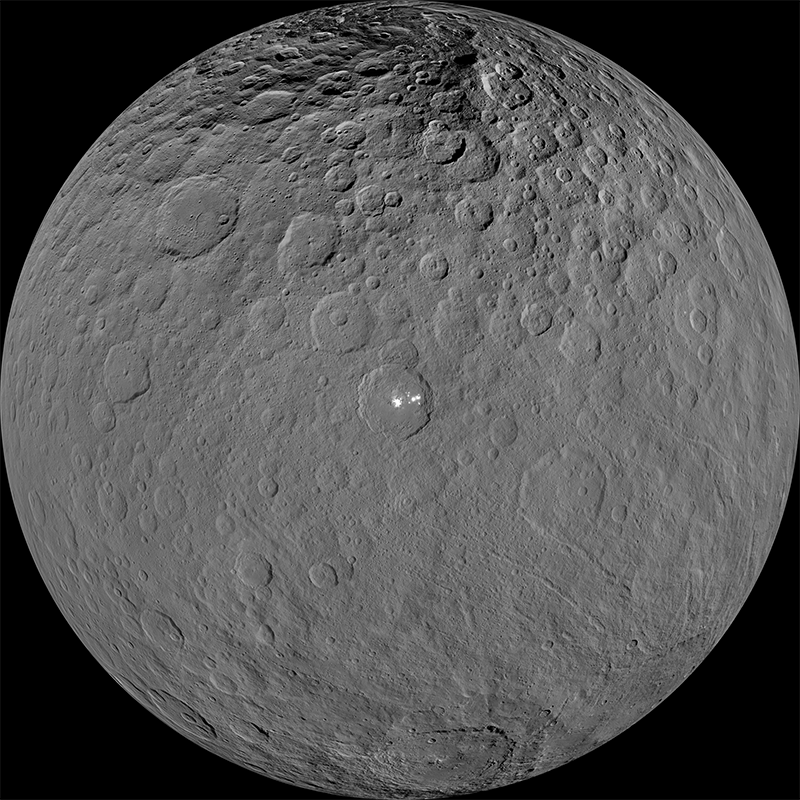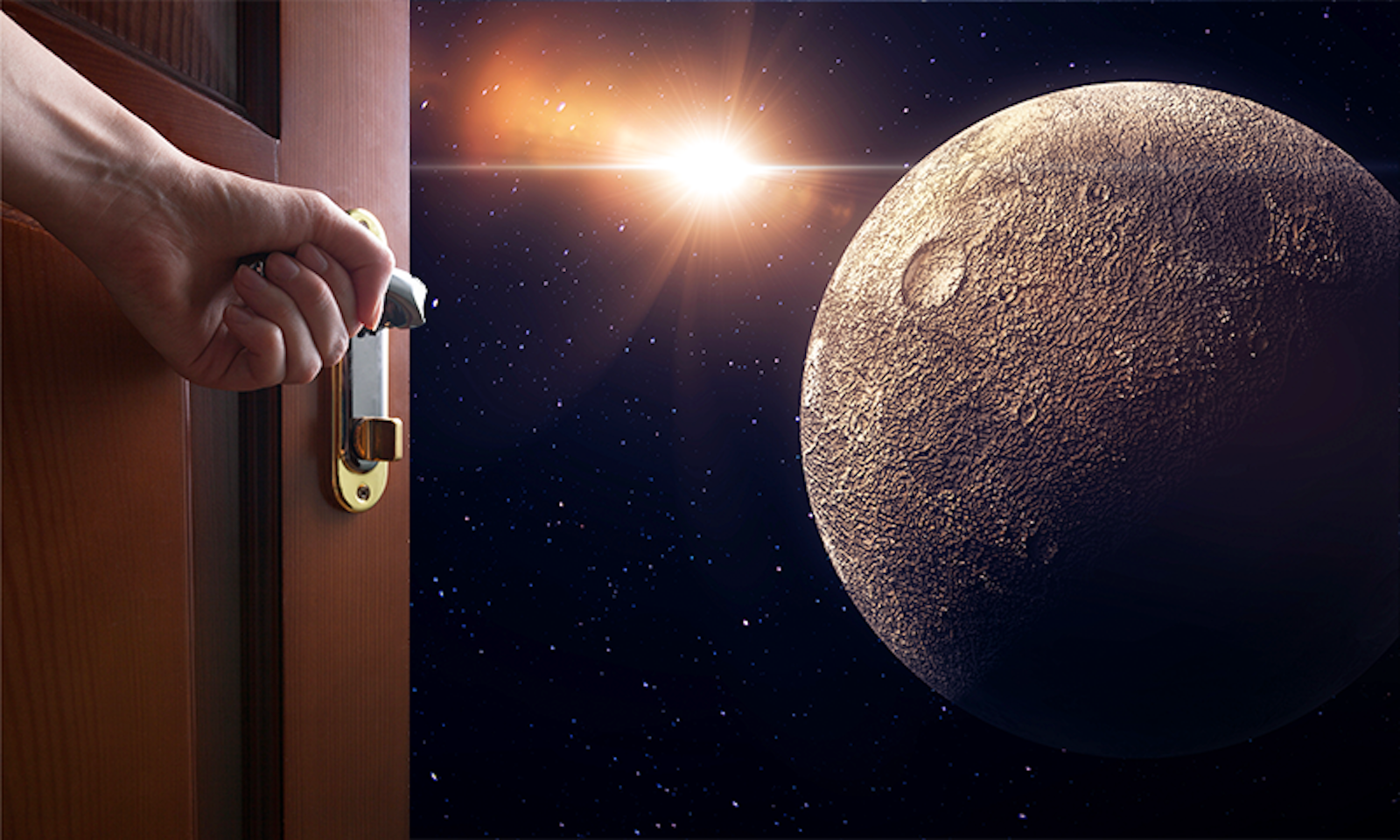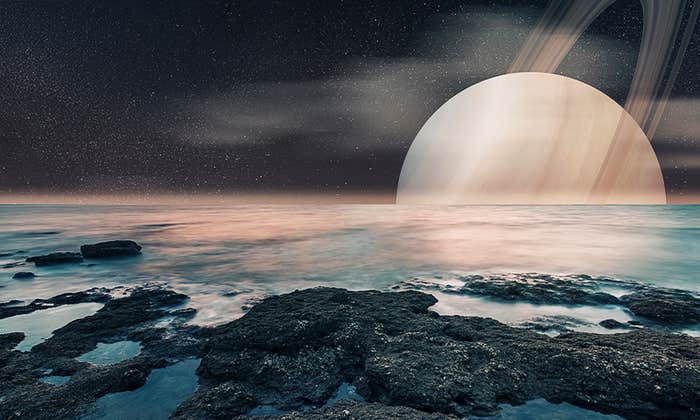Ceres is the biggest thing between Mars and Jupiter. But that didn’t make it easy to find. Darkly orbiting the sun from within the heart of the asteroid belt, it’s long been a spark for scientific imagination. The American astronomer Garrett Serviss made Ceres home to a species of giants that could grow to a height of 40 feet in his 1898 novel Edison’s Conquest of Mars. The story inspired Robert Goddard to pioneer rocket science and engineering with the hope of unlocking interplanetary travel. In the TV show The Expanse, Ceres harbors not alien giants but millions of “Belters,” humans who toil to extract the asteroid belt’s resources. A quarter of Ceres’ mass might be water ice. A mission to return a sample from the surface of this “evolved ocean world” is something scientists at NASA’s Jet Propulsion Laboratory are seriously considering.
But how did that strange little world get there? And can it clue us into the mysterious early life of our solar system? The answer to that second question is, now: Yes. A recent study I co-authored along with Driss Takir, a planetary scientist at the NASA Johnson Space Center in Houston, and others, uses new observations of asteroids like Ceres to fill in some gaps in the youthful period of our solar system’s history, more than 4.5 billion years ago.
It’s been hypothesized that Ceres had an earlier ocean that was lost to space.
The biggest of these so-called “large dark asteroids” has posed a bit of a conundrum for planetary scientists. For a long time, Ceres was the only object of its kind, the first asteroid discovered, in 1801, by Sicilian Catholic priest Giuseppe Piazzi. That is, until astronomers spotted another asteroid just one year later (Pallas), and two more over the next five years (Juno and Vesta). Thanks to 200 years of more and more sophisticated observations, our database of asteroids now contains over 500,000 objects. Yet Ceres, the biggest and most massive asteroid (containing about 40 percent of the total mass in the asteroid belt), still presented a puzzle.

Ceres is a carbonaceous, or C-type, asteroid, the most common kind in the solar system. They’re quite dark, reflecting little light. Yet Ceres stands out from most of them: It’s the only known cryovolcanic asteroid, with all of its old impact craters erased by low-temperature cryomagma (a mixture of mud and briny water). And unlike many large asteroids, Ceres has no “family” of smaller asteroids associated with it. It has sometimes been considered a lone oddball, but in our latest paper, published in Nature Astronomy, we show that it’s simply the biggest and most visible member of the large dark asteroids. These reflect less than 10 percent of the light shining from the sun, and they’re more than 100 kilometers in diameter (making each the size of a modest mountain range).
Recently, our team, led by Takir, carefully observed the largest sample of these flying mountain ranges in the near-infrared spectrum. They all—or almost all—appear to be clustered near the outer edge of the main asteroid belt, orbiting the sun at a distance between about 3 and 3.4 astronomical units, the distance between Earth and the sun (which makes Mars 1.5 astronomical units away, and Jupiter 5.2). Ceres is the exception, falling outside the cluster at 2.77 astronomical units. With this sample of astronomical relics, we could figure out when and how they formed.
We modeled how these large dark asteroids might have heated when they came together. They started off as loose assemblages of grains and pebbles in space. Then, by the force of their own gravity, they squished more and more as the asteroids became more massive. Meanwhile they were heating up, mainly from the radioactive element Aluminum-26. The amount of energy this element released during the first 2 to 3 million years of solar system history amounts to more than all of the heat released by all other sources over the past 4.5 billion years (except for the sun, of course).
Yet this hot stuff’s radioactivity is short-lived: With a half-life of 700,000 years, it was basically all used up, or extinct, within 2 or 3 million years. (The half-life of uranium-235, by comparison, is 700 million years.) The sun’s planetesimals—the building blocks of the planets and asteroids—formed over a timespan of 4 to 5 million years. So Aluminum-26 superheated and desiccated the planetesimals that formed fastest, sparing those that formed later. The degree of heating also affects how much asteroids compress, determining whether an asteroid has a markedly dense core, with other distinct layers surrounding it, or not.
What explains where the large dark asteroids ended up?
We found, using state of the art models (that included heating by Aluminum-26, compaction, and other processes), that the large dark asteroids arose relatively late in the game, between 1.5 and 3.5 million years after the solar system started forming. Their interiors never reached very high temperatures, so these asteroids remain relatively porous. They didn’t undergo a big squish. For Ceres, this meant that, with its larger size and mass—1 percent of the moon’s mass despite being half its size—it could continue to evolve along the lines of something planet-like than other large dark asteroids. Yet it also underwent comparatively greater compaction and heating. And, while there is evidence for cryovolcanism, Ceres is thought to have lost a large fraction of its initial water (and it’s been hypothesized that Ceres had an earlier ocean that was lost to space). So, even though Ceres has no “twin” among the large dark asteroids, its physical characteristics are consistent with being a larger pea from the same pod.
Did this pod simply form in a narrow ring around the sun, or are they strange visitors from elsewhere? From what we understand about the rowdy history of our solar system, it seems the large dark asteroids must have come from beyond the outermost reaches of the planet-forming disk, about 20 to 40 astronomical units from the sun. That’s almost as far out as Pluto! What brought them closer to home?
Meteorites in the last few years have offered a clue. They fall into two broad categories: carbonaceous (basically, chunks of C-type and similar asteroids from the outer part of the asteroid belt), and non-carbonaceous (chunks of other types of brighter, denser, stonier asteroids such as S-types, from the inner part of the belt). Measurements clearly show that carbonaceous and non-carbonaceous are different: The isotopes they harbor (in a wide range of elements) are so different that it seems highly unlikely that they formed in close proximity within the solar system. Rather, the non-carbonaceous ones probably represent planetesimals from the inner solar system, closer than Jupiter’s orbit and the rocky planet zone and asteroid belt). The carbonaceous asteroids likely came from farther away.
There were a number of dynamic episodes during the dawn of the solar system. Lots of stray rock and other material made its way to the asteroid belt on multiple occasions.

When Jupiter and Saturn grew from cores into full-fledged gas giants, their gravitational reach expanded. They drew in nearby planetesimals, and the ones that escaped the gas giants’ pull got flung in all directions; a fraction made their way into the (outer) asteroid belt. This is probably where most of the C-types came from. Jupiter and Saturn’s orbital migration, along with the collisional growth of the ice giants Uranus and Neptune, also kicked around planetesimals, with some of them landing in the asteroid belt. The final shakeup happened when the giant planets went dynamically unstable. During this event, Jupiter and Saturn’s orbits rapidly spread apart (Jupiter moving slightly inward, Saturn moving outward by 1 to 2 astronomical units). The ice giants spread outward dramatically (shifting by 5 to 10 astronomical units)—and one extra Uranus-like planet was likely ejected from the solar system entirely. The belt of leftover comet-like planetesimals was almost completely ejected, but a small fraction coasted into the asteroid belt.
What explains where the large dark asteroids ended up? While the C-types are more commonly found in the outer belt, they’re broadly scattered across the whole asteroid belt, and so probably got flung in during Jupiter and Saturn’s growth. But the large dark asteroids have this narrow orbital distribution in the belt that doesn’t jibe with that story. The only event that could have implanted the asteroids in a narrow distribution at the outer edge of the belt is the dynamical instability. All of the other candidates tend to implant a broad swath of asteroids rather than the narrow ring we see today.
So it seems that Ceres, along with the other dark asteroids, was born in the solar system’s outer rim long after planet formation was underway. It grew from chunks of rock and ice. Given the late time, it stayed colder than most other planetesimals, remaining water-rich and porous, and stayed home while the gas giants, and then the ice giants, grew and migrated. But the dynamical shakeup from the giant planet instability was too much, and it was—luckily for exploration-obsessed primates—pulled toward the sun. Unlike most of its brethren, which were ejected into interstellar space, Ceres was trapped by a trick of orbital mechanics and stranded in the outskirts of the asteroid belt, shining darkly for the last 4.5 billion years unseen, until Piazzi spotted it.
“I have announced this star as a comet,” he immediately wrote to an astronomer friend, “but since it is not accompanied by any nebulosity and, further, since its movement is so slow and rather uniform, it has occurred to me several times that it might be something better than a comet.” By “something better,” he meant a planet and, after more observations, that’s what he settled on. But this bugged astronomer William Herschel, who told Piazzi that Ceres isn’t worthy of being a planet: Since it’s small and shares its orbit with other objects, it doesn’t hold the space between Mars and Jupiter “with sufficient dignity.”
Today we split the difference. Perhaps Piazzi and Herschel could agree that Ceres possesses enough dignity—at least according to NASA—to be a “dwarf planet.” A place maybe more friendly than Mars. Something a not-far-off tour of Ceres’ terrain, a “prime destination to study habitability,” could confirm. ![]()
Sean Raymond is an American astrophysicist working at the Bordeaux Astrophysical Laboratory in France. He also writes a blog at the interface of science and fiction (planetplanet.net) and recently published a book of astronomy poems.
Lead image: Andamati and 4Max / Shutterstock




























